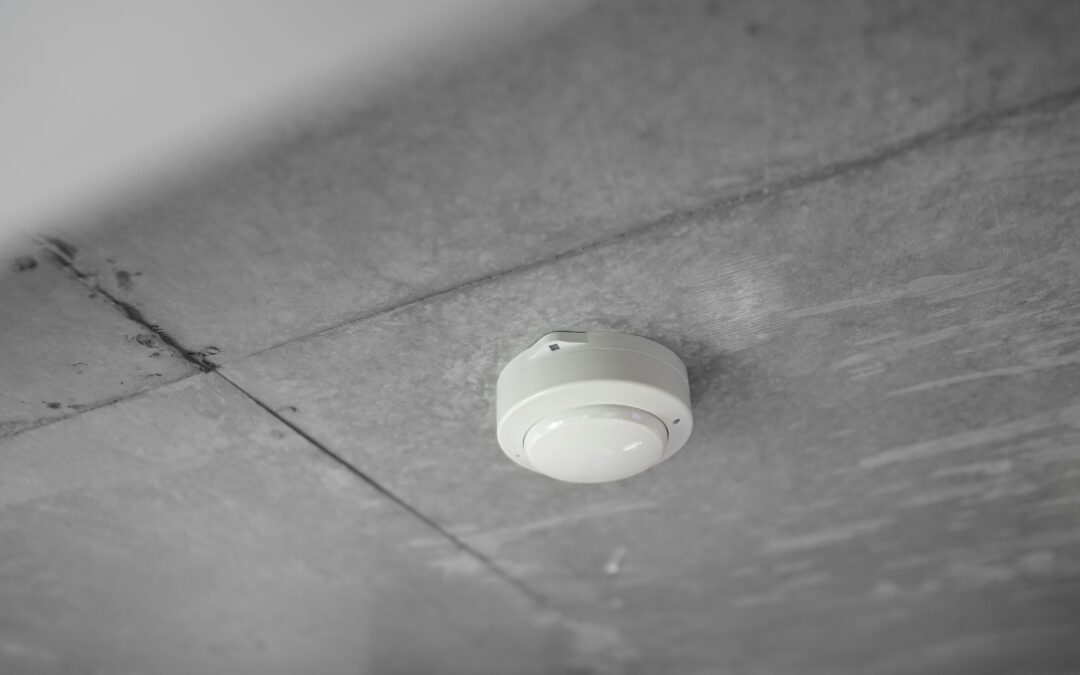Why Install Fire Detectors?
Fire detectors provide early warning of fire, allowing prompt action to control the fire before it spreads, minimizing property damage and saving lives. They alert occupants, giving them time to evacuate safely, and can activate fire suppression systems, reducing the risk of severe damage or loss of life.
Types of Fire Detectors
The diversity in fire detectors is designed to provide effective and reliable fire detection tailored to different types of fires, environments, and specific needs. The following are the most common types of fire detectors that are used and sold in the market:
There are two types of smoke detectors: Ionization and Photoelectric. Ionization smoke detectors use radioactive material to sense smoke particles, disrupting ion flow to trigger an alarm, making them ideal for fast-flaming fires. Photoelectric smoke detectors detect smoke by scattering a light beam, which activates the alarm, making them effective for smouldering, slow-burning fires.
There are two types of heat detectors: Fixed temperature and Rate-of-Rise. Fixed temperature heat detectors activate when the surrounding area reaches a specific temperature, making them suitable for spaces prone to false alarms like kitchens and car parking. Rate-of-rise heat detectors trigger when the temperature increases rapidly, typically by 12–15°F per minute, and can respond faster in rapidly growing fires.
Flame detectors can be classified as Infrared (IR), Ultraviolet (UV) and IR/UV Combined. Infrared (IR) flame detectors detect the infrared radiation from flames and are used in high-risk environments like oil refineries or chemical plants. Ultraviolet (UV) flame detectors sense UV light from flames, providing quick responses in fire-prone areas. IR/UV combined detectors use both infrared and ultraviolet detection to enhance accuracy and reduce false alarms, commonly used in sensitive environments like aircraft hangars and industrial plants.
Linear infrared detectors consist of two components: an emitter and a receiver. The emitter produces infrared rays, while the receiver captures the reflected rays. If an object obstructs the path between the emitter and receiver, the light beam is disrupted. This disruption is recognized by the controller, which then triggers an alarm or initiates a response.
Aspirating Smoke Detection (ASD) Systems: These systems continuously sample air from different parts of the building through a network of pipes. The air is analyzed for smoke particles using highly sensitive laser technology, enabling early detection even before visible smoke is present. These systems are ideal for clean rooms, data centres, and environments where early detection is critical.
Linear fire detector cables, also known as linear heat detection (LHD) cables, are a type of fire detection system designed to sense heat along the entire length of the cable. These cables detect temperature changes and trigger an alarm when the temperature exceeds a predefined threshold or when a rapid rise in temperature is detected. Linear fire detection cables are often used in areas where traditional point detectors may be impractical, such as tunnels, large open spaces, conveyor belts, and industrial settings like warehouses or power plants.
Why is it necessary to conduct a fire risk assessment to determine the suitability of different types of fire detectors in place?
Assessing the appropriate type of fire detector depends on several factors identified during the fire risk assessment. Key considerations include the nature of potential fire hazards, the rate at which a fire could spread based on materials and processes, environmental conditions like temperature, dust, smoke and steam that could affect detector performance, and the types of equipment present in the area. These factors are crucial in determining the most effective fire detection system.
To read more about Occupli Fire Risk Assessments, click here.
Occupli’s consultancy team are here to help your workplace stay safe and compliant when it comes to fire safety. To arrange a Fire Risk Assessment, email info@occupli.com or call 0818 315 415.

